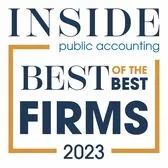The federal Opportunity Zone (OZ) Program was enacted as part of the 2017 Tax Act. Two sets of lengthy Proposed Regulations were issued in 2018 and early 2019. On December 18th Treasury and the IRS issued 544 pages of Final Regulations, including an extensive preamble.
Consistent with the Proposed Regulations, Treasury attempted to interpret the OZ statute in the most taxpayer-friendly ways. The Final Regulations (“Regulations”) are being well-received by OZ investors, OZ Fund managers, and OZ consultants. We anticipate that OZ fund investing will see renewed momentum as a result of the clarity in these regulations, as well as the December 31st deadline for maximizing the OZ benefits.
The Regulations will generally become effective 60 days from December 18th, but taxpayers can elect to adopt them earlier.
A discussion of the most significant provisions are summarized below:
- Treasury did not extend the December 31, 2019 deadline for securing the full 15-percent tax basis “step-up” after holding the Qualified Opportunity Fund (QOF) interest for more than seven years.
- Somewhat surprisingly, Treasury caved into a barrage of public comments and will allow GROSS IRC Section 1231 gains to be reinvested, without requiring netting of current year Section 1231 losses, or recapturing Section 1231(c) losses recognized in the prior five-year period. However, upon recognizing the deferred gain in 2026 or earlier year, the Section 1231(c) “look-back” period will be operative. This allows significant tax planning and rate arbitrage. More detailed planning to follow after 12/31/19 year-end, but contact one of the HCVT OZ team members below if you have questions before 12/31/19 year-end.
- Section 1231 gains can now be reinvested within 180-days of the actual recognition date (rather than the year-end of the taxpayer or the flow-through entity). So no need to wait until 12/31/19 to make their QOF investments.
- Section 1231 and “regular” capital gains flowing from Partnerships, S Corporations, and non-grantor trusts begin their 180-day reinvestment period on the ORIGINAL due date of the flow-through entity’s return, rather than the end of entity’s tax year under the Proposed Regulations.
- The Regulations confirm that installment gains, originating from pre-2018 sales and subsequent installment collections, begin the 180-day reinvestment period on the date of each installment collection. For taxpayers desiring to accelerate QOF investing, they can elect out of installment treatment for federal purposes. We are confirming, but with CA OZ non-conformity retaining installment reporting for state purposes will be advantageous.
- Regulated Investment Company (RIC) and Real Estate Investment Trust (REIT) dividend DISTRIBUTIONS will generally start the 180-day reinvestment period at the end of the shareholder’s tax year. However, taxpayers may elect to begin the 180-day period on the date the dividends are PAID. UNDISTRIBUTED dividends are taxable (thereby starting the 180-day reinvestment period) on the taxpayer’s or RIC/ REIT’S tax year-end, at the election of the investor/ taxpayer.
- The Regulations adopted the public’s request to apply an “aggregate” approach to the “Substantial Improvement” test (i.e. doubling the basis intangible assets acquired to treat it as newly acquired) rather than measuring improvements on an asset-by-asset basis. This is particularly helpful for active businesses, or real estate projects that might involve adding new structures on a parcel with another building not requiring improvements.
- The “vacant building” exception to the “substantial improvement” test has now been shortened to three years or less.
- Treasury liberalized the rules for allowing a secondary QOF investor (e.g. secondary investor purchasing QOF interest from an original QOF investor prior to 12/31/2026) to purchase such interests. This improves the secondary market for QOF investing (for the next seven years) which will be welcomed by fund managers.
- The Regulations clarify that assets contributed into a QOF in lieu of cash are Non-Qualified OZ property for purposes of the 90-percent QOF and 70-percent Qualified Opportunity Zone Business (QOZB) testing. This will generally not present a problem for larger ground-up real estate projects but may present issues for operating businesses and smaller real estate projects.
- Built-in-Gains associated with REITs, RICs or S Corporations are eligible for OZ reinvestment to the extent they represent capital gain income.
- Treasury did not back-off on the Related Party (20-percent equity/ income participation) Rules and provided more guidance on the anti-abuse aspects of a lessor granting a lessee an option to purchase the subject property.
One significant negative contained in the Regulations include a broadened restriction when a QOF investor(s) sell the property to a QOF or QOZB and then invest the gain into the related QOF.
The Preamble in the regulations discusses a new view (under the step-transaction/ circular cash flow theories) of such transactions as a non-taxable contribution rather than a taxable sales, thereby NOT generating an eligible re-investable gain – even when the seller(s) retains less than 20-percent of the QOF. Under this new interpretation two things happen 1) the tax gain is not triggered and is therefore not an eligible source for reinvestment into ANY QOF and 2) the property which is now treated as NOT purchased by the QOF or QOZB is not treated as Qualified Opportunity Zone Property for purposes of the 90-percent QOF and 70-percent QOF tests.
The actual Regulation language (vs. Preamble) does not detail the treatment contained in the Preamble, but clearly the IRS will apply this concept. Congress may look at this major issue as they consider a Technical Corrections Bill. If a taxpayer has a gain from another transaction, this can offer a solution to this problem.
Alternatively, we continue to explore the possibility of setting up two separate QOFs - a land QOF and a building or property QOF - which would avoid investing the gains into the same QOF that will hold the sold asset(s). While this strategy would clearly avoid the specific language in the Preamble, and as long as the seller/ investor does not have any economic interest in the land/ property (other than a party to a ground lease that would need to be established with arms-length terms), the OZ statute includes a broad Anti-Abuse provision, which could be applied. - There are a number of provisions addressing C and S Corporation restructuring and Inclusion Events (triggering deferred gain), but we are seeing no S Corporation structuring at the QOF or QOZB levels and fairly limited C Corporation structures at the QOZB level [except to potentially take advantage of IRC Section 1202 – Qualified Small Business Stock (QSBS)]. On the Inclusion Event front, there is additional guidance on the amount of deferred income inclusion depending on partial versus full sale of QOF interests.
- In cases where taxpayers purchase QOF interests at different times, the Regulations clarify that First-In-First-Out (FIFO) ordering is the general rule, but Specific Identification is allowed – EXCEPT FOR QOF’S FORMED AS PARTNERSHIPS – due to basis complexities. An unfortunate conclusion.
- There are a number of the grantor/ Intentionally Defective Grantor Trust (IDGT)/ estate clarifications – but contact one of the HCVT OZ team members below for specific questions.
- The Regulations provide that for purposes of beginning the 30-month improvement period for tangible assets, self-constructed assets will be treated as “acquired” on the date “physical work of a significant nature begins”. The Regulations include a safe harbor threshold of 10% of the project costs (excluding land, planning, design, financing, etc.).
- Inventory inclusion/ exclusion for active businesses. For purposes of the 90-percent and 70-percent semi-annual tests, fund managers may elect to either include or exclude inventory from the numerator and denominator. Once elected, consistency is required. Keep in mind, inventory will often be stored off-site so taxpayers may want to exclude. In-transit rules also apply to avoid negatively impacting taxpayers.
- The Regulations include a six-month “cure period” to fix non-compliance.
- The Regulations introduced a self-De-Certification option for taxpayers who choose to opt-out of the OZ program at a future date. The IRS will also provide future guidance on INVOLUNTARY de-certification.
- With respect to investing excess cash within the QOF/ QOZB, care must be exercised to limit investments into Nonqualified Financial Property (NQFP) – which is debt, stock, partnership interests, options, futures contracts, warrants, notional contracts, annuities, and similar assets. There is a five-percent limit (vs. total QOF assets) on holding such assets. In addition, to avail a QOZB to the 31-month Working Capital Safe Harbor, the cash in the QOZB is limited to investing in cash, cash equivalence or debt instruments with terms of 18 months or less. With respect to the new 62-month Working Capital Safe Harbor for Start-Up Businesses (requires multiple cash infusions, but the 62-month period runs from the first infusion), the Regulations will not disqualify a Start-Up Business for exceeding the five-percent NQFP during this period.
- The Regulations include some examples of “Anti-Abuse” violations.
- The Regulations provide limited guidance on what constitutes “Reasonable Cause” for waiving of penalties for failing the 90-percent qualified asset testing at the QOF level.
As the extensive regulations change, HCVT will provide updated guidance.
For additional information, please visit the Frequently Asked Questions page, the full set of Regulations or contact us at:
Blake Christian Alejandra Lopez Abi Yanke
Tax Partner Tax Manager Advanced Tax Accountant
(435) 200-9262 – Park City (562) 216-5516 – Long Beach (435) 200-9267 – Park City
(562) 216-1800 – Long Beach Alejandra.Lopez@hcvt.com Abi.Yanke@hcvt.com
Blake.Christian@hcvt.com


